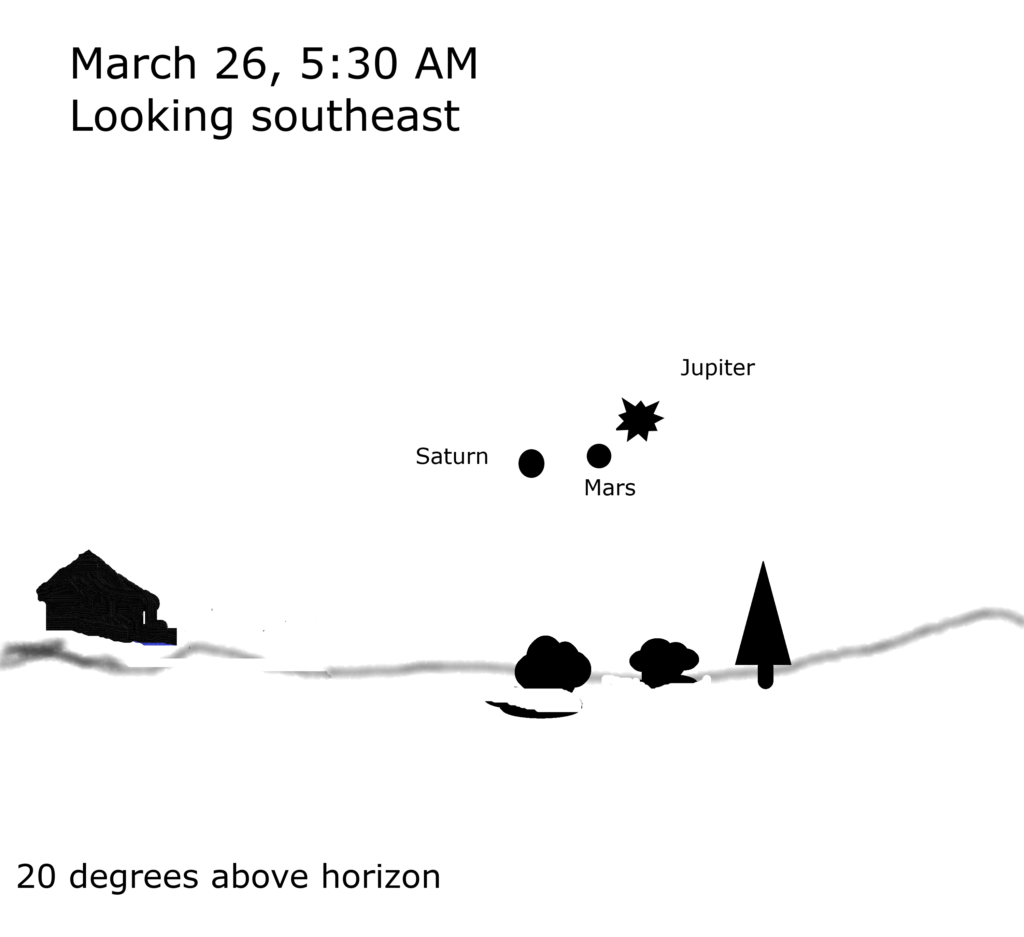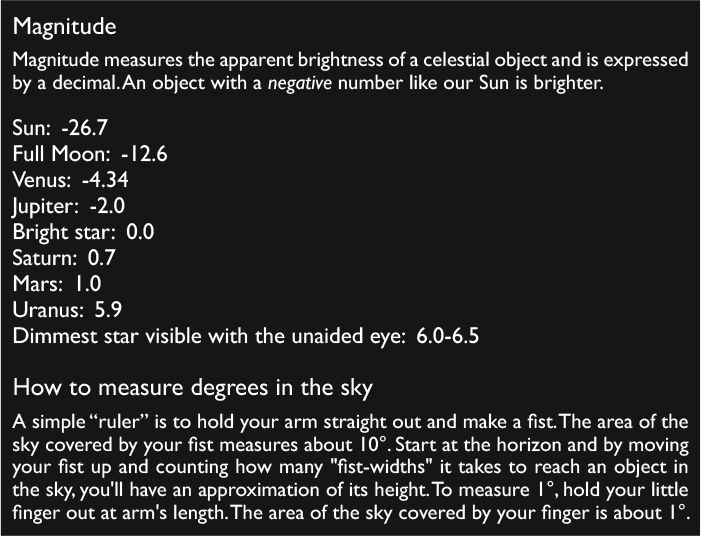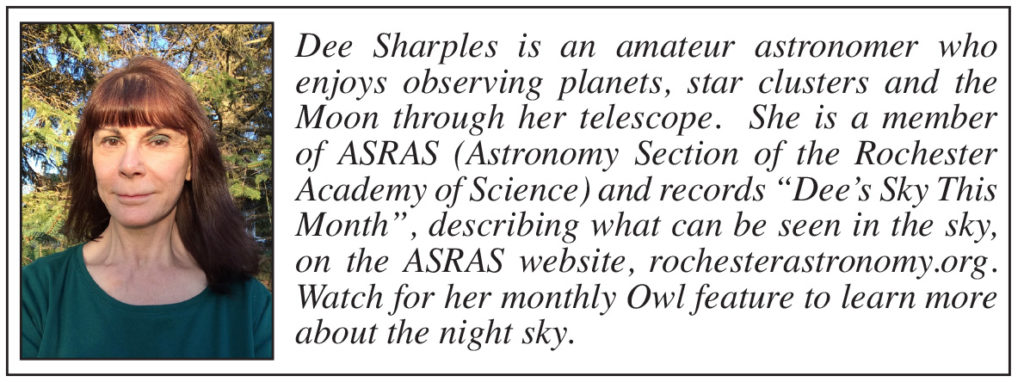The Night Sky-Venus Dominates in March
- By Dee Sharples
The planet Venus will dominate the evening sky throughout the entire month of March. It will shine brilliantly for a full three hours after the Sun sets.
In the beginning of March, look for the planet in the early evening, high in the western sky, dazzling at magnitude -4.3. It will be accompanied by a crescent Moon.

As the month progresses, Venus will serve as a beacon for those observers who would like the challenge of spotting the distant ice giant planet, Uranus. On March 7th and 8th, these two planets will stand only about 2 degrees apart, but you will need binoculars to spot much dimmer Uranus shining at only magnitude 5.9. On both evenings, scan the sky just below and slightly to the left of Venus. There are only a few very dim stars in this region, so it should be easy to pick out Uranus which will look like the brightest “star” in that small area.

Venus is the 2nd planet from the Sun and the only planet named for a female. It’s one of the terrestrial planets and has been referred to as Earth’s twin. Until the mid-1900s, the surface environment of Venus was believed to be similar to Earth and perhaps harbor life, but that belief disappeared with the age of space exploration.
In 1962, NASA’s Mariner 2 spacecraft flew past Venus, transmitting information about its temperature, atmosphere, and rotational period. The Soviet Union’s space probe, Venera 7, was the first to reach its surface on December 15, 1970. It survived only a short time, transmitting weak signals.
Several other spacecraft were sent to Venus in the next 30 years, providing color pictures, mapping the surface, studying its atmosphere in depth, and taking radar images of 98% of its surface.
Venus surprisingly holds the distinction of being the hottest planet in the solar system, despite not being the closest to the Sun. Its clouds are made of sulfuric acid and a thick carbon dioxide atmosphere traps heat, causing a runaway greenhouse effect with surface temperatures of 880 degrees Fahrenheit, hot enough to melt lead.
Similar in structure and size to Earth, it’s slightly smaller, has an iron core, a mantel of hot rocks, and a thin crust of rock on its surface. Venus spins very slowly on its axis in the opposite direction from most planets. (Uranus is the only other planet that spins in this backward direction.) Its extremely slow rotation makes a day on Venus 243 Earth days long! The planet’s year is less than its day, only 225 Earth days long. Venus has mountains, valleys, and thousands of volcanoes. In that respect, it does sound Earth-like.
If you’re an early-morning riser, you’ll be in for a three-planet treat in March. Jupiter, Saturn, and Mars will be visible every morning, starting about 5:30 a.m. At the beginning of the month, they can be spotted low in the southeast spanning a distance of 20 degrees across the sky before the Sun rises. The brightest will be Jupiter at magnitude -2.0, then Saturn at 0.7, with the faintest being Mars at 1.0.
On March 26, they’ll form a lovely grouping which will be the closest they will appear to come to each other over the past 20 years. In reality, they are actually millions of miles apart in the solar system, but only appear to be close to each other from our vantage point on Earth.
The vernal equinox occurs at 11:50 p.m. on March 19, officially ushering in spring for the northern hemisphere!
